Creating a Learning Community
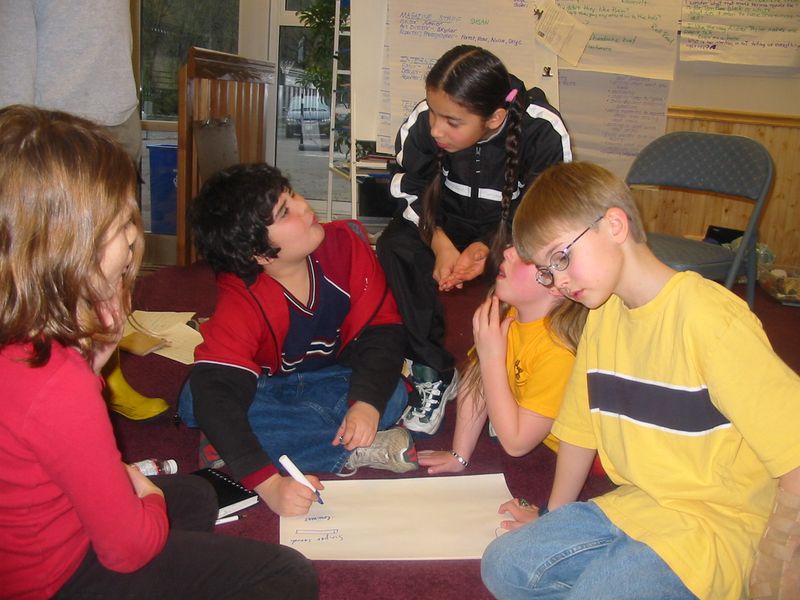

Relationships are the
fundamental organizing system for our approach to education at Opal School.
This approach is influenced heavily by the inspiration and leadership we have
received from the researchers in the municipal pre-primary schools of Reggio
Emilia, Italy. It is also informed by current research in the neurosciences and
psychology which confirm the central role relationships play in human
development throughout our lives.
That is why the phrase learning community holds so much
meaning for us. You cannot have one without the other.
Depth of understanding
involves the ability to experience the curiosity, passions, joys and angers of
others with a process of empathy, perception, and identification of human
understanding. Always
intersubjective, human understanding requires openness, sympathy and
generosity. The children, men and
women of today, more than ever, need understanding on the part of other people
who have open hearts and minds, people who know how to recognize their own
personal and cultural limitations. – Carlina Rinaldi
All learning is subjective. All skills sit in the context of
the experience of the human being they are intended to improve. Experience and
education cannot be separated. No matter how much we wish it were different, or
choose to ignore, they are not separate.
There is no such thing
as educational value in the abstract. The notion that some subjects and methods
and that acquaintance with certain facts and truths possess educational value in
and of themselves is the reason why traditional education reduced the material
of education so largely to a diet of predigested materials. – John Dewey
All learning is intersubjective.
What we consider to be educational content isn’t born in the abstract, either.
It comes from the experience of other human beings and is never neutral. If we
want children to understand their world, to really comprehend all the things we
hope to teach them in school, to work productively in this world, we have to
support them and teach them to understand the experience of one another.
Education is a social
process; education is growth; education is not preparation for life but is life
itself. – John Dewey
At the end of a year-long study of ecological
interdependence, 7-year-old Maya wrote this reflection in her journal:
In September you would
have seen us running down the hill making the earth loosen so we would have a
landslide. Now you would see one
person running down the hill and the rest saying, “You’re being an accidental
villain![1] Please get off the hill!” We have become a community. At the beginning of the year, we hadn’t
known each other. We didn’t know
our souls! But in the research we
did, we knew what we wanted through it.
We cared for each other.
Our language changed. What
we knew changed! We knew more
together! We learned more! –Maya,
age 7
[1] The phrase
“accidental villain” was born several days before Maya wrote this journal
entry. The class had watched a video that shared stories of unintentional
introduction of invasive species in various places in the world. The teacher
had asked the children: What roles do you see that humans play in these
stories? 8-year-old Liam raised his hand and answered, “Well, I see three
roles: the hero, the victim, and the accidental villain.”
Maya perfectly captures the essence of intersubjectivity as
she weaves between the research and the caring and describes the evolution of
the group culture and identity through that process.
Children, in fact, seem to know this instinctively. They
expect the world to be connected and interconnected. They inhabit the world
that way.
Here are more reflections from 6- and 7-year-old children:
What a community
is: A community is a big group of people that all take good care of each
other. And when somebody new comes, the community tries to make the new
person become part of the community and connect. And even though they
are all different they are still a community. - Nisa
If maybe once there was a city
that where everyone was the same. Then if one would cry then
everyone was sad. But one day someone came and that person came from
a totally different place and she was really happy. And the other people
started staring at her. And they were so surprised at how much she could
do. So very slowly everyone started to go to try out what they could do,
so now they learned their lesson and found out all each one could do.
– Sophia
In spite of this instinctive tendency,
the adults charged with the guidance of a learning community need to remember
that belonging is complicated.
What follows is a
reflection by Zalika, written in her first days of her first year as an Opal
School teacher. The majority of her first and second grade students have more experience at Opal
School than she does. They are a diverse
group from a wide variety of economic and ethnic backgrounds who live in
neighborhoods all over the city of Portland. Most of them have been in class
together for a year already, but about 6 of them are new to the school. Several
children have special rights – one has autism and is included in the classroom
full time.
Notice how she works to frame expectations for these complications.
Notice her attention to the inherent intersubjectivity of curriculum and
emotion and relationship and community.
The (almost) unfamiliar
rains have sprinkled the ground and the leaves are beginning to
turn. September is most certainly upon us. I can hardly believe we
have only been in school nine days! I am already dreaming (literally) about the
amazing students in Opal 2 and the community I am lucky enough to come to each
day. A community of children who displays such love and care for each
other that I am left speechless. In Opal 2 last week, we worked on
routines, continued our stories, enjoyed math workshop, examined our
garden, read many new books and played and played and played. As I
pieced together my notes and memories from our week, I just had to share a
few examples of the courage, care and kindness I witnesses in this, my new
community.
I read Thank You Mr. Falker last
week by Patricia Polacco. It is her account of her difficulty as a reader
and the teacher who stepped up and refused to let her believe her own fears and
doubts. I love this story and can barely finish without a tear. I
can identify with so many pieces of Patricia's journey. Now that I'm
a teacher, my connection to her experience moves through both her
childish perspectives to the teacher's response with aching poignancy.
I offered this story as a piece of me, a jumping off place for welcoming all
kinds of readers and truly a piece of my heart. I cannot tell you the
care with which my heart was received. " I love that story," was
heard from many once the spell cast by a truly powerful story was broken by our
collective exhale. We lived her story together, and I could feel
their hearts break for Patricia's pain as much as they rejoiced in her
success. I know that Opal 2 is a community that cares.
As for courage, in many ways courage is
essential in 1st and 2nd grade. Friendship (the real kind where there is
risk and vulnerability) inherently requires courage. To invite despite
uncertainty, to voice your experience and emotion, and to maintain
independence despite the social barometer takes courage. It takes courage
to share your written work, courage to offer a hypothesis or defend a
conclusion, courage to read the “just right” book for you. It takes
courage to trust a new friend or teacher who does strange things and reads
strange stories and asks for help with the most mundane things. I
know and respect this courage. I've seen it time and time again. Still, there
are moments when I am newly in awe of the courage of young children. Add in the
response of genuine care… well, then you have one of my favorite Opal 2
moments of last week. In that moment, one small, rather quiet
voice held all of Opal 2 in the palm of her hand. In that moment, I had to
prepare for our next activity and I had to walk away and trust. I turned
back to look at my classroom community and saw every eye trained upon this
student's courageous sharing. Each child sat in silent listening
stance making visible their authentic care for her. I would have hugged
them all, but that so would have ruined the moment :)! I trusted, courage
answered, and care responded beautifully.
Just as listening communicates care, so
too it reveals marvelous happenings. My final moment of the week needed
this intentional revealing. It was a moment as devoid of fanfare as
brushing my teeth this morning. Actually, I didn't even mean to be
listening exactly. I was just interested in the impressive structure a
group of boys had crafted out of Kapla blocks. It was so cool, I went
over to admire their technique. Drawn in by the unique building, I stayed
to listen to their conversation regarding, shall we say, the
"distribution of resources." Dealing with a finite number of
blocks, three boys discussed foundational economic principles like supply and
demand, as well as more primitive ideals such as first come, first
served.
Finally, I heard the following exchange: "Well, you can have all of these back here cause I'm not really using
them." (Referring to a bunch of Kaplas creating steps for the
structure.) "Thanks!" came quickly from the two boys requesting
blocks. Eager hands began to dismantle the steps as blocks were
redistributed. Then, "Just be careful not to knock down the
building." I had to look twice at who was speaking so strong was my
assumption that only the builder of the structure would voice words to defend
it. I looked once, and then again realizing slowly that the voice
belonged to a block gatherer. His concern was for the
well-being of his friend's work rather than his own. The simplicity
and surprise of this thoughtful kindness took my breath away.
When was the last time my own voice raised in defense of another with no
strings attached?
So
we begin from a position of strength. But there is always work to do. As a class, we
brainstormed words and ideas about what a healthy community could “look like,
feel like and sound like.” These words, along with drawings we did of
ourselves, brought our ideas visibly and tangibly into the room to provide the
inspiration for both our actions and our imaginations.
Still, we wanted to go deeper and know more.
We
broadened our scope to include considerations of our new Opal garden boxes. And
as we intentionally invited connections with the idea of community, we heard
children repeatedly, easily, naturally connecting life for us with life in the
garden. Children see and move through the world in metaphor. It is powerful to
remember to invite it in.
When we were babies we were small
just like a seed, so a seed is like a baby! - Kevin
We know that plants need sun, water
and food (or nutrients) in their soil but they also need love, help and
protection from everybody just like kids do. - Ethan
We wondered together:
"What image could we create that uses [colors we mixed in tempera to represent
ourselves] to show what we know about our community?" And the references
to the garden continued.
I am kind of thinking that a tree
grows into a blossom in the middle. There is a seed and it is planted and
it grows and the blossom comes. -Pearl
The blossom is the community. -Victoria
The people all come together to make
one giant blossom. -Quin
We revisited this conversation
with the children by inviting them to use collage, watercolor and black line
pen to explore more deeply the concept of “blooming” that they had been
using as a metaphor for community. Here is part of a conversation that took
place as they worked:
Bodhi: The living petals are the people working
together in community and some are falling off because it is too hard but
inside there are more people who will keep trying to make it work.
Maliya:
These are the kids and the squares are
knights protecting them from danger.
Teacher:
What do we need to protect our community
from? What is dangerous to community?
Maliya:
Disbelief – people who don't like
communities. When our community helps each other and our
community gets stronger and older everyone can protect the others.
Bodhi:
We need equality of care. It
wouldn’t be fair if some people were cared for more than others.
Daniel: Loving or caring about everyone helps the
community, like a family, everyone loves everyone else. We feel safe when
we feel loved.
Sophia:
The seeds are the circles in the middle
and they are the kids in the community.
Nissa:
The roots can be the grownups in the
community.
Aiofe:
The grownups help the kids grow.
Quin:
The kids turn into grown-ups and it
starts over again. It is just like the life cycle of a flower and people.
But a flower has a shorter life cycle than a community.
WOW! As children worked with
materials, all of this amazing thinking emerged. It seemed as though
a clear direction for our image reflecting community would surely take
shape. With excitement, my collaborating teacher, Erin, and I brought yet
another question to the children hoping to lend practicality to all of this visioning. We
gathered together, clipboards in hand, on the edge of our seats, ready to
record all the brilliant thoughts they would offer and we asked: "When
have you felt this ‘blooming’ in Opal 2?"
We heard… silence. Yes, children had experienced it on soccer
teams, in their families, even in Opal 1 a few times, but this year… not
yet.
Ugh! Really? All this
working together felt so good, and still the children are saying to us, not yet?
We teachers had to let that
settle in. We remained dedicated to grounding our work in the
children's real experience and their message appeared clear. Many things they
could tell us about community, but the experience of blooming - not
yet, not yet.
Once the adults backed up from
our own hopes and visions, we once again stood in awe of the children’s wisdom
and honesty. OF COURSE not yet! Community, the real kind that can
endure both the brilliance and imperfections of its participants takes
time. Relationship and commitment rely upon many shared experiences to
craft and trust. May I say, in all honesty…”duh.”
We are absolutely a work in progress and thankfully the children in Opal
2 reminded us teachers not to settle for less.
Invigorated by the depth
of the children’s wisdom we began to craft curriculum around our many new
wonderings: How could we help children continue to show their
understanding of a community in process? What images could help children
express their thinking about their community and their roles in it?
What is the relationship between their thoughts about equality and the
expectation of uniformity? Can we make room for individuals within a group?
Will everyone need the same thing to bloom? What does it mean to protect
each other and show care for each other? What can we learn about this care from
our caring for the garden? And finally, what about this image we have been
working toward? How could we continue to utilize children's colors and
imaginations to express their authentic emotions and experiences?
Deep challenging questions all, so naturally, we will
plan to ask the children!
In this powerful reflection, we see that Zalika knows well
this caution:
We must know that
children, although naturally inclined, do not acquire the art of becoming
friends or teachers of one another by finding models in heaven or in manuals;
rather, children extract and interpret models from adults when the adults know
how to work, discuss, think, research, and live together. –Loris
Malaguzzi
Adults must know well how to work, discuss, think, research and live together with one another and in the company of children. All learning is
intersubjective. All experience is learning.

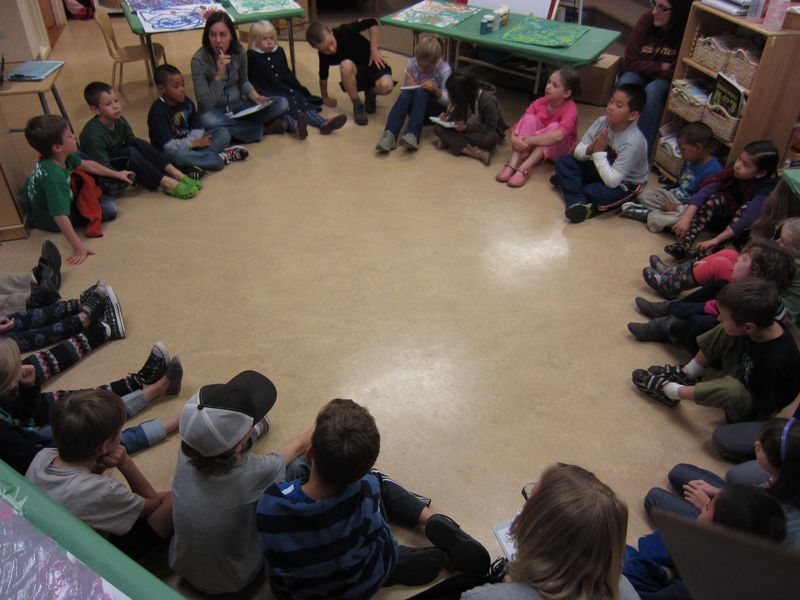
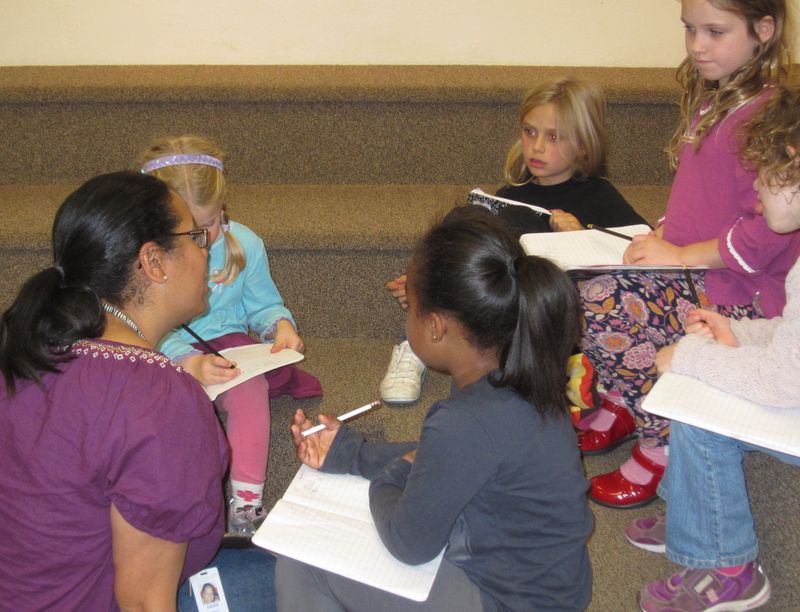
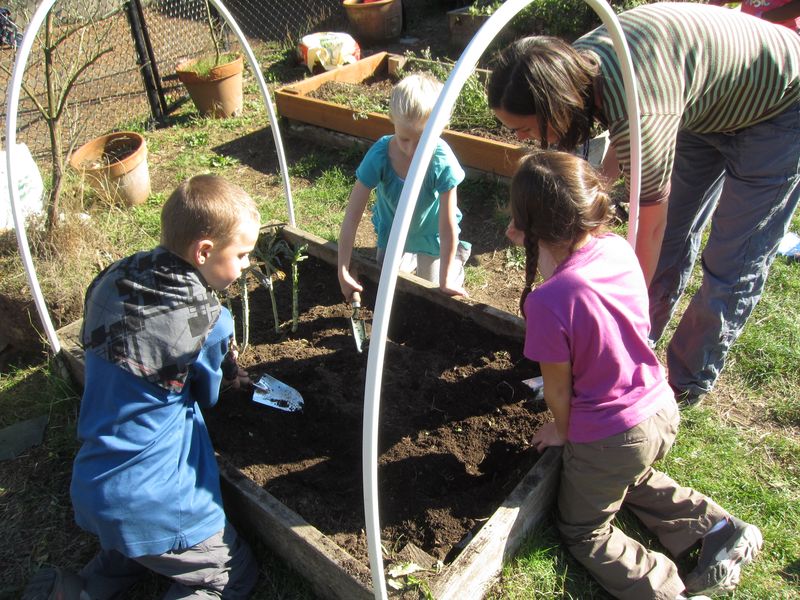
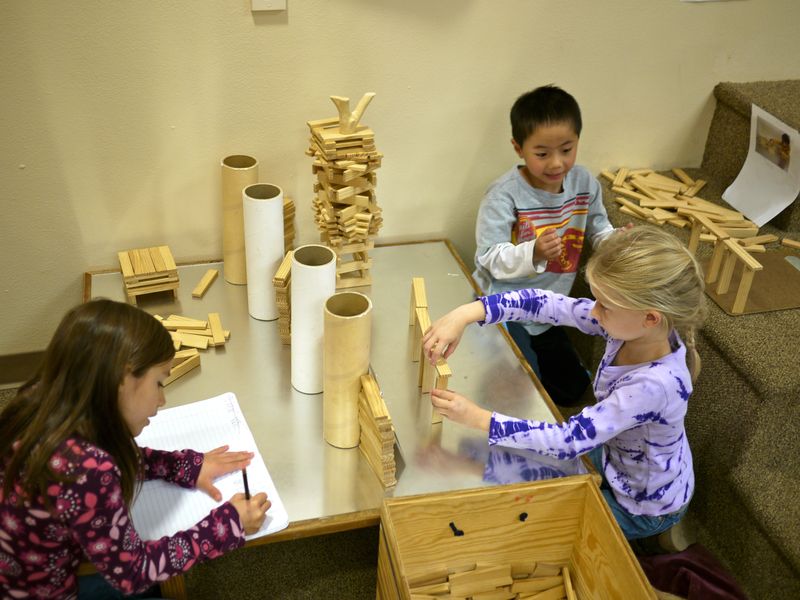
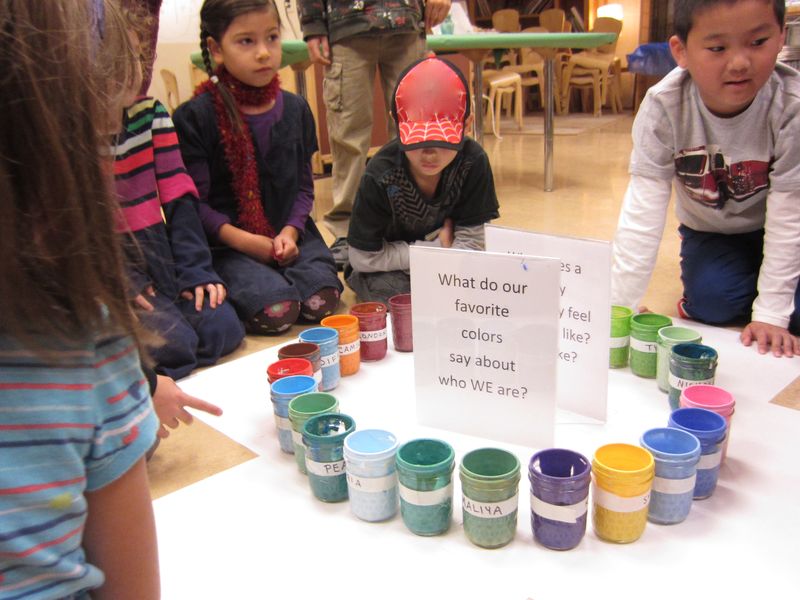
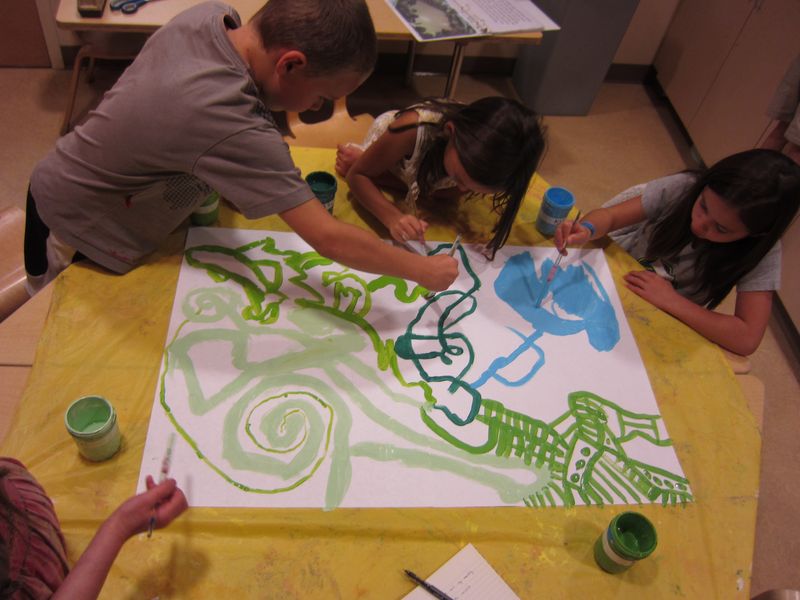
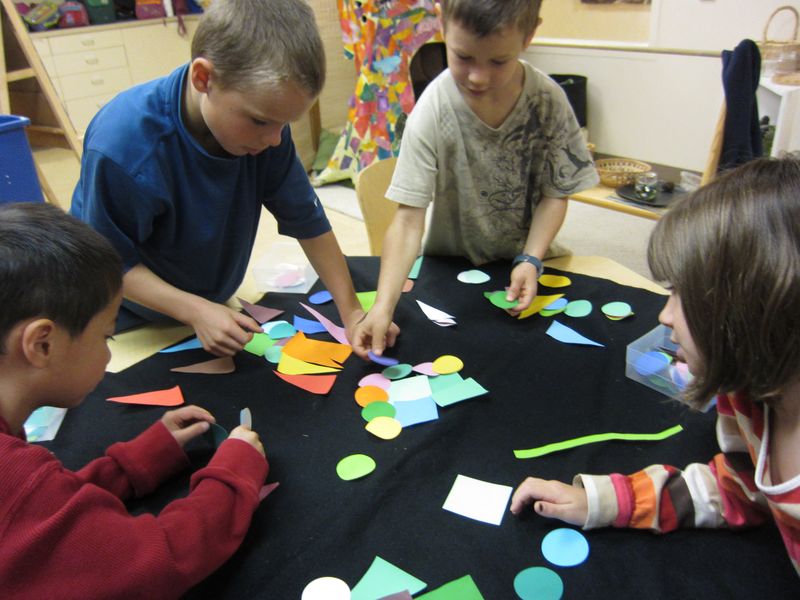
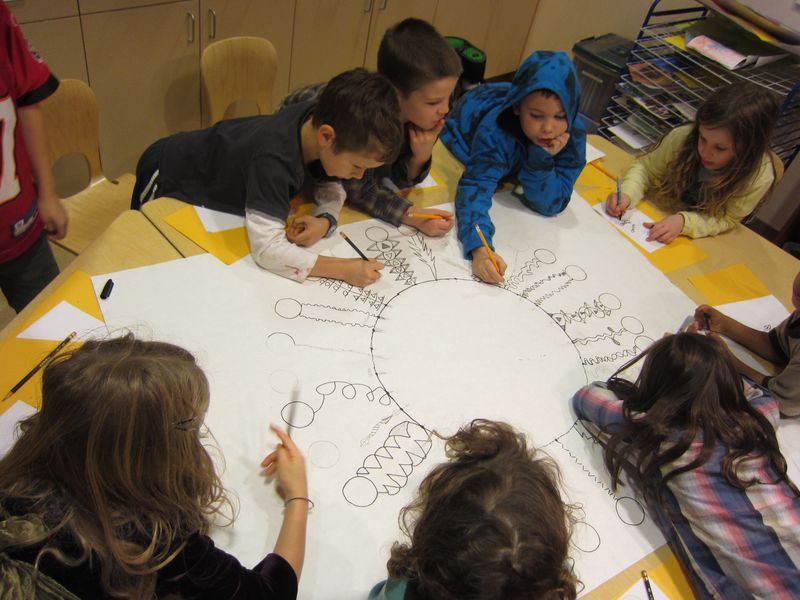
Two ideas that lingered after reading this article are,
“Just listening communicates care…” & “Community, the real kind that can endure both the brilliance & imperfections of its participants takes time.”
I work in an extended care “community” so the participants are not always the same children, so our work is cut out for us to establish a free-flowing community!
What I took away: experience is education. The two cannot be separate. As I talked this morning with a perspective parent to our school, I was trying to explain this. The parent wanted to know how we assess children and “check the boxes” if “all we do” is have experiences. The other piece is that we cannot have experience as education until children trust those around them. When that occurs, the true learning begins to “blossom”.
What I took away most from this article was the sense of building a community for the children, teachers and families of the classroom/school. When children feel safe and secure in there classroom community is when the real blossoming of experiences occurs. Through these experiences and explorations is when education/learning occurs.
Listen
Ear
You
Eyes
Heart
Undivided attention
In Mandarin brushstrokes
Gathered with my Bulgarian community of fellow wonder-ers in Plus Tova this morning, we are looking at what a respectful community is, what it looks like and sounds like…and how do we generate it and maintain it….who uses the word ‘community’ in the classroom, and how contrived is it? How do we promote it? How do we create the classroom agreements and how much autonomy do the children have in their creation? How much do we have facilitate and ‘force’ the behaviours?
I was struck by the honest & egoless orientation of this teacher. As adults supporting children, we must remain truly open to any outcome. They will always let us know what they need if we are listening.
Trust is an integral part of any community. With trust comes courage or gives people the ability to be brave. I feel like my students are good at taking risks because we have built a trusting community.
I like how play is discussed in this article. Play naturally lends itself to discussing difficult concepts, children don’t realize that they are tackling these concepts-such as the boys that talked about the strain on resources and discussed how they would solve the problem.
Admitting faults is being part of a community and the teachers in the article took cues from the children’s reactions and knew when it was time to push harder or pull back.
Trust, courage, sharing and the ability to admit when you are wrong are all important parts that support a community. I have choice time in my room where students can choose where they would like to play. My goal is to just sit back and watch the students during this time so that I am able to observe these parts of community coming together.